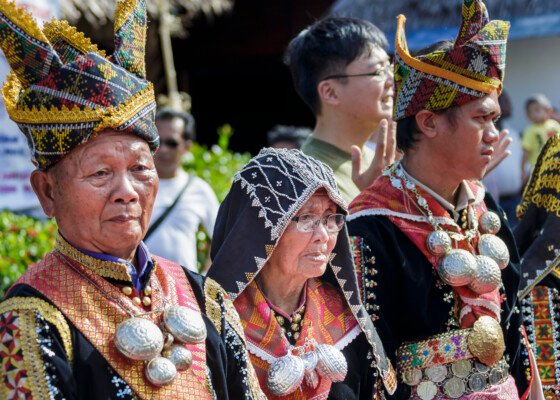Mount Kinabalu, Southeast Asia‘s highest peak, isn’t just a majestic natural wonder; it’s also home to a rich tapestry of indigenous cultures with deep connections to the mountain. For generations, these communities have lived in harmony with Mount Kinabalu, weaving their stories, traditions, and beliefs into the very fabric of this sacred place. Let’s embark on a journey to discover the Indigenous People of Mount Kinabalu, their history, and their enduring relationship with this awe-inspiring peak.

Who are the Indigenous People of Mount Kinabalu?
Several indigenous groups call Mount Kinabalu their home, each with unique customs and languages. The Kadazan-Dusun, Murut, and Lun Bawang communities have resided in the surrounding foothills for centuries. Shaping the cultural landscape of the region. Their lives have been intricately entwined with the mountain. Influencing how they view the world, practice agriculture, and celebrate their spirituality.
Living in Harmony with Nature
For the Indigenous People of Mount Kinabalu. The mountain isn’t just a geographical feature; it’s a living entity, imbued with spiritual significance. They believe it to be the dwelling place of powerful spirits and ancestors, demanding respect and reverence. This deep connection fosters a sustainable way of life, where resource use is mindful, and environmental preservation is paramount. Traditional knowledge passed down through generations guides their agricultural practices. Ensuring responsible land management and minimizing their impact on the mountain’s delicate ecosystem.
Mythology and Rituals
Mount Kinabalu features prominently in the mythology of these communities. Legends speak of creation stories, where the mountain emerged from the earth, giving life to the surrounding lands. Rituals and ceremonies are held throughout the year, seeking blessings for bountiful harvests, good health, and protection from harm. These traditions ensure cultural continuity and strengthen the spiritual bond between the people and the mountain.
Challenges and Adaptations
The lives of the Indigenous People of Mount Kinabalu haven’t been without challenges. Tourism development and changing landscapes have impacted their traditional ways of life. However, these communities demonstrate remarkable resilience, adapting their practices while holding onto their cultural heritage. Collaborative efforts with conservation organizations and tourism operators are creating opportunities for sustainable development, ensuring the well-being of both the communities and the mountains they cherish.
Visiting with Respect
If you’re fortunate enough to visit Mount Kinabalu, remember that you’re entering a sacred space with a rich cultural heritage. Be mindful of local customs and traditions, respect the environment, and honour the connection between the Indigenous People and their beloved mountain. By understanding their unique perspective, we can appreciate Mount Kinabalu not just for its scenic beauty but also for the cultural tapestry woven into its very essence.
Final Thoughts
By recognizing and appreciating the stories and traditions of the Indigenous People of Mount Kinabalu, we gain a deeper understanding of the mountain’s true essence. They are the guardians of its history, the voices of its past, and the stewards of its future. As we explore this majestic peak, let us remember their connection to it, ensuring that their stories continue to echo through the ages, reminding us of the profound connection between humans and nature.
You will find the following information useful:




